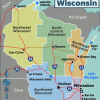Single‐family housing starts in January were at a rate of 1.004 million, according to new data from the U.S. Census Bureau and the Department of Housing and Urban Development. This is 4.7% below the revised December figure of 1.054 million.
Privately‐owned housing starts in January were at a seasonally adjusted annual rate of 1.33 million, which is 14.8% below the revised December estimate of 1.56 million and is 0.7% below the January 2023 rate of 1.34 million.
Single‐family authorizations in January were at a rate of 1.01 million, which is 1.6% above the revised December figure of 999,000. Privately‐owned housing units authorized by building permits in January were at a seasonally adjusted annual rate of 1.47 million, which is 1.5% below the revised December rate of 1.49 million and 8.6% above the January 2023 rate of 1.35 million.
Single‐family housing completions in January were at a rate of 857,000, which is 16.3% below the revised December rate of 1.02 million. Privately‐owned housing completions in January were at a seasonally adjusted annual rate of 1.41 million, which is 8.1% below the revised December estimate of 1.54 million and 2.8% above the January 2023 rate of 1.37 million.
NAR Chief Economist Lawrence Yun acknowledged the news with concern.
“Housing starts collapsed in January,” Yun said. “More snow than usual fell across parts of the country, but the seasonally adjusted data implies a continuing housing shortage ahead. Multifamily construction fell 37% from a year ago and has been one of the lowest monthly activities over the past decade. Rising apartment vacancy is not due to fewer renters but rather due to the oversupply of construction in the past three years. Developers are, therefore, pulling back, at least temporarily.”
Yun added, “Ideally, single-family housing starts would be at 1.2 million, which would measurably help to relieve the housing shortage. America greatly underproduced housing in the decade before Covid. That shortage is still lingering in the marketplace. The way to address the shortage is to incentivize construction. However, some localities are choosing the wrong policies, such as rent control, NIMBYism, and raising impact fees, which will make the shortage worst and raise housing costs in the long run.”
Robert Dietz, chief economist at the National Association of Home Builders, mixed his concern with cautious optimism.
“Multifamily construction is forecasted to post a large decline in 2024 as the number of units currently under construction is near the highest level since 1973,” said Dietz. “Meanwhile, single-family production, which is currently running at a 1-million-unit annual rate, is roughly in line with builder sentiment that remains right below a breakeven level, according to our latest surveys. We are forecasting single-family starts to post a modest gain in 2024 as mortgage rates moderate on expected interest rate cuts by the Federal Reserve later this year.”














